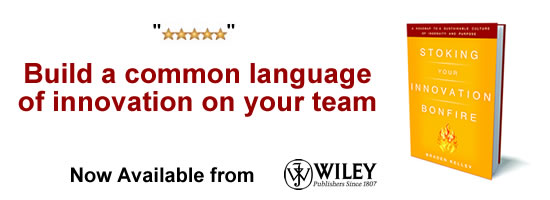
GUEST POST from Janet Sernack
According to McKinsey & Co, in a recent article The new roles of leaders in 21st-century organizations they say that the focus of leaders, in traditional organisations, is to maximize value for shareholders. To do this effectively, they say that traditional leaders typically play four different roles – the planner (developing strategy and translating it into a plan); the director (assigning responsibility); and the controller (making sure everyone does what they should minimize variance against the plan). Whilst these represent the core and foundational business management and leadership roles essential to successful organisational performance, the world has changed significantly, and traditional organisations are being severely disrupted. Requiring the development of new, adaptive, and supplementary, and new leadership and team roles, which embrace the set of 21st-century superpowers for leaders and teams – strategically supported by digital technologies, and an ecosystem focus to thrive in the face of exponential change and a VUCA world.
Maximizing the dormant space
This creates a space of unparalleled opportunity towards reshaping the world anew by activating what might be considered the dormant space, between traditional leadership roles and the possibility of a set of 21st-century superpowers for leaders and teams.
To be embraced, enacted, and embodied by conscious leaders and collaborative teams in more purposeful, meaningful, and innovative ways that serve people, customers, and the common good.
The new roles of leaders and teams in the 21st century
The leadership paradigm has shifted, in the past 20 years, to focus more on “co-creating meaningful value with and for all stakeholders, expanding beyond shareholders to include customers, employees, partners, and our broader society”.
Taking the stance that in an open system, everyone must win through co-creation, collaboration, experimentation, and innovation that results in delivering great customer experiences. To retain and sustain current customers, and to attract and attain new ones in an increasingly competitive global marketplace!
Making the key “leadership challenge of our times” as one which cultivates transformative eco-system-led learning and change, nurturing connections, exploration, discovery, creativity, collaboration, experimentation, and innovation at all levels of the system.
Requiring the traditional organisational leadership roles, to shift towards bravely and boldly “stepping into the uncharted territories of future possibility” and weaving these possibilities into the way people work and commune together.
To co-create new “holding spaces” for igniting, harnessing, and activating people’s collective intelligence to embrace and execute change and deliver the desired commercial outcomes their organisation wants.
Openings for unparalleled opportunities
It seems that we not only survived through the emotional and mental anxiety and overwhelm of living in “a world of disruption, drama, and despair” we also saw the range of disruptive events as a “crack” or opening in our operating systems, for unparalleled opportunities.
By intentionally embracing the “key changes that currently reshape all our innovative learning systems” including the action confidence (courage and capacity to step into something new and bring it into being, creating reality as we step into it) to:
- Deepen the learning cycle (from head-centric to the whole person: heart, head, and gut-centric).
- Broaden our perspectives and actions (from an individual focus to an eco-system focus).
A moment in time – taking a deep breath
One of the many challenges our collective at ImagineNation™ faced during the Covid-19 pandemic-induced lockdowns (we had six long ones here in Melbourne, Australia over 18 months) was the opportunity to slow down, hit our pause buttons, retreat and reflect and take some very deep and slow breaths.
To make time and space to rethink, respond, regroup, experiment, and play with a range of wondrous, imaginative, and playful ideas, to unlearn, learn and relearn new ways of being, thinking, and acting to sense and actualize a future that is wanting to emerge – even though, then and right now, it was and still is unclear how.
Acknowledging that whilst many of us, and the majority of our clients were experiencing the range of significant emotional reactions, mental stalling, and the anxiety and overwhelm of living in “a world of disruption, drama, and despair” as well as sensing and perceiving the world that is emerging as one of unparalleled opportunity”.
Stepping up and into new spaces of possibility and learning
Individually and collectively, we focussed on a range of rethinking, responding, and regrouping strategies including adopting new 21st-century leadership roles.
Initially by taking responsibility for sustaining our own, our partners, and our families, emotional energy, mental toughness, engagement, and overall wellness.
Then consciously enact and embody the new set of emerging 21st-century leadership roles as visionaries, architects, coaches, and catalysts:
- Being visionaries: by co-creating a collaborative and global collective of aligned ecosystem partners with clear accountabilities within a virtual, profit share business model.
- Being architects: by iterating, pivoting and sharing our IP and learning programs to close peoples’ “knowing-doing gaps” to help them unlearn, learn, relearn, reshape and develop their 21st-century superpowers for leaders and teams.
- Being coaches: by exploring working with the range of innovative new coaching platforms, including BetterUp and CoachHub to better democratize, scale, and share our strengths, knowledge, and skills to help a significant number of people deal more effectively with the impact of virtual hybrid workplaces.
- Being catalysts: by focussing on partnering with clients to break down their self-induced protective and defensive “silos” to support them to become aware, acknowledge, accept, and resolve their feelings of loneliness, isolation, and disconnection, and overall anxiety.
21st-century superpowers for leaders and teams
It seems that these are just some of the 21st-century superpowers for leaders and teams which act as the foundations necessary to survive and thrive through the emerging decade of both disruption and transformation.
Summing these up into more concrete actions for leaders and teams include cultivating and sustaining these five superpowers:
- Transformational Literacy: The ability to increase our capacity to collaborate and co-create across institutional and sector boundaries through “shifting consciousness from ego-system awareness to eco-system awareness.” to pioneer solutions that bridge the ecological, the social, and the spiritual divides existing in the 21st
- Nimbleness and Agility: The ability to shift and re-think and re-learn in changing contexts, to quickly experiment, iterate and pivot to adapt and move forwards collaboratively through mindset flips to emerge creative ideas and innovative solutions that are appreciated, valued, and cherished.
- Scalability: The ability to rapidly build desired and most relevant internal capabilities, to shift capacity and service levels through increasing creativity, invention, and innovation in ways that meet changing customer expectations, and satisfy their demands and future requirements.
- Stability: The ability to maintain “action confidence” and operational excellence under pressure that frees people from the constraints of “getting it right” and allows them to continuously unlearn, learn, relearn and change through “failing fast” or forward, without being blamed or shamed.
- Optionality: The ability to “get out of the box” to build and develop value chains, stakeholder engagements, or an ecosystem focus to acquire new capabilities through external collaboration.
Walking the path forward
According to Otto Scharmer, in a recent article “Action Confidence: Laying Down the Path in Walking” the leadership qualities we also need to nurture in order to lean into the current moment and to source the courage to act are: Humility. Vulnerability. Surrender. Trust.
It might be time to hit your own pause button, retreat and reflect, inhale a deep breath in this precious moment in time to develop your path forwards and develop an ecosystem focus and an ecosystem focus and a human-centric, future-fit focus.
To embrace, enact and embody a set of 21st-century superpowers for leaders and teams and reshape your innovative learning systems by developing the action confidence to adopt an ecosystem, whole person, and a whole perspective that contributes to the good of the whole.
Join our next free “Making Innovation a Habit” masterclass to re-engage 2022!
Our 90-minute masterclass and creative conversation will help you develop your post-Covid-19 re-engagement strategy. It’s on Thursday, 10th February at 6.30 pm Sydney and Melbourne, 8.30 pm Auckland, 3.30 pm Singapore, 11.30 am Abu Dhabi and 8.30 am Berlin. Find out more.
Image credit: Unsplash
 Sign up here to get Human-Centered Change & Innovation Weekly delivered to your inbox every week.
Sign up here to get Human-Centered Change & Innovation Weekly delivered to your inbox every week.

![]() Sign up here to get Human-Centered Change & Innovation Weekly delivered to your inbox every week.
Sign up here to get Human-Centered Change & Innovation Weekly delivered to your inbox every week.

 After a week of torrid voting and much passionate support, along with a lot of gut-wrenching consideration and jostling during the judging round, I am proud to announce your Top 40 Innovation Bloggers of 2021:
After a week of torrid voting and much passionate support, along with a lot of gut-wrenching consideration and jostling during the judging round, I am proud to announce your Top 40 Innovation Bloggers of 2021:
 Greg Satell is a popular speaker and consultant. His first book,
Greg Satell is a popular speaker and consultant. His first book, 
 Jesse Nieminen is the Co-founder and Chairman at
Jesse Nieminen is the Co-founder and Chairman at 
 Rachel Audige is an Innovation Architect who helps organisations embed inventive thinking as well as a certified Systematic Inventive Thinking Facilitator, based in Melbourne.
Rachel Audige is an Innovation Architect who helps organisations embed inventive thinking as well as a certified Systematic Inventive Thinking Facilitator, based in Melbourne.

 A twenty-five year Procter & Gamble veteran, Pete has spent the last 8+ years applying insights from psychology and behavioral science to innovation, product design, and brand communication. He spent 17 years as a serial innovator, creating novel products, perfume delivery systems, cleaning technologies, devices and many other consumer-centric innovations, resulting in well over 100 granted or published patents. Find him at pete.mindmatters@gmail.com
A twenty-five year Procter & Gamble veteran, Pete has spent the last 8+ years applying insights from psychology and behavioral science to innovation, product design, and brand communication. He spent 17 years as a serial innovator, creating novel products, perfume delivery systems, cleaning technologies, devices and many other consumer-centric innovations, resulting in well over 100 granted or published patents. Find him at pete.mindmatters@gmail.com Nicolas is an International Innovation Executive, expert in corporate innovation programs, and innovation labs, designing place where good innovation thrives! He currently helps the 20 innovation managers of Orange Africa to develop their projects locally. In 2019 he wrote
Nicolas is an International Innovation Executive, expert in corporate innovation programs, and innovation labs, designing place where good innovation thrives! He currently helps the 20 innovation managers of Orange Africa to develop their projects locally. In 2019 he wrote 


 Mike Shipulski brings together people, culture, and tools to change engineering behavior. He writes daily on Twitter as
Mike Shipulski brings together people, culture, and tools to change engineering behavior. He writes daily on Twitter as  Scott Anthony is a strategic advisor, writer and speaker on topics of growth and innovation. He has been based in Singapore since 2010, and currently serves at the Managing Director of Innosight’s Asia-Pacific operations.
Scott Anthony is a strategic advisor, writer and speaker on topics of growth and innovation. He has been based in Singapore since 2010, and currently serves at the Managing Director of Innosight’s Asia-Pacific operations.

 Phil McKinney is the Author of “Beyond The Obvious”, Host of the Killer Innovations Podcast and Syndicated Radio Show, a Keynote Speaker, President & CEO CableLabs and an Innovation Mentor and Coach.
Phil McKinney is the Author of “Beyond The Obvious”, Host of the Killer Innovations Podcast and Syndicated Radio Show, a Keynote Speaker, President & CEO CableLabs and an Innovation Mentor and Coach.
 Gijs van Wulfen helps organizations to structure the chaotic start of innovation as author, speaker and facilitator. He is the founder of the FORTH innovation method and author of the innovation bestseller The Innovation Expedition. He was chosen by LinkedIn as one of their first 150 Influencers. Follow Gijs @gijsvanwulfen
Gijs van Wulfen helps organizations to structure the chaotic start of innovation as author, speaker and facilitator. He is the founder of the FORTH innovation method and author of the innovation bestseller The Innovation Expedition. He was chosen by LinkedIn as one of their first 150 Influencers. Follow Gijs @gijsvanwulfen



 Tom Koulopoulos is the author of 10 books and founder of the
Tom Koulopoulos is the author of 10 books and founder of the  Michael Graber is the cofounder and managing partner at
Michael Graber is the cofounder and managing partner at 
 Shawn Nason, founder and CEO of MOFI, lives his life with a commitment to make everyone he meets a part of his family. Armed with the gift of discernment, he has the uncanny ability to walk alongside people as they struggle to connect with their deepest passions and engage their most debilitating demons. He challenges the world around him to be fully present, get real, and knock down the barrier that separates the various compartments in their lives.
Shawn Nason, founder and CEO of MOFI, lives his life with a commitment to make everyone he meets a part of his family. Armed with the gift of discernment, he has the uncanny ability to walk alongside people as they struggle to connect with their deepest passions and engage their most debilitating demons. He challenges the world around him to be fully present, get real, and knock down the barrier that separates the various compartments in their lives.
 John Carter has been a widely respected adviser to technology firms over his career. John is the author of
John Carter has been a widely respected adviser to technology firms over his career. John is the author of 
 Ludwig Melik is CEO of Planbox, whose mission is to help organizations thrive by transforming the culture of agile work, continuous innovation, and creativity across the entire organization… Connect with him on LinkedIn or join the conversation by following Planbox on Facebook, Twitter, and LinkedIn.
Ludwig Melik is CEO of Planbox, whose mission is to help organizations thrive by transforming the culture of agile work, continuous innovation, and creativity across the entire organization… Connect with him on LinkedIn or join the conversation by following Planbox on Facebook, Twitter, and LinkedIn.

 Soren Kaplan is the bestselling and award-winning author of Leapfrogging and The Invisible Advantage, an affiliated professor at USC’s Center for Effective Organizations, a former corporate executive, and a co-founder of
Soren Kaplan is the bestselling and award-winning author of Leapfrogging and The Invisible Advantage, an affiliated professor at USC’s Center for Effective Organizations, a former corporate executive, and a co-founder of 
 Eric Eskey is a Managing Director at Strategyn, an innovation consultancy. Eric is in the business of creating the future. I aim to use the resources he has – his work, investments, voice, and imagination – to encourage innovation and defeat the hidden forces that resist it.
Eric Eskey is a Managing Director at Strategyn, an innovation consultancy. Eric is in the business of creating the future. I aim to use the resources he has – his work, investments, voice, and imagination – to encourage innovation and defeat the hidden forces that resist it.
 Mick Simonelli is an innovator with 20+ years of implementing change and positive disruption at USAA. As a military veteran, he held transformation roles in numerous military organizations; and as a business executive, he purposely hired vets to help launch numerous innovations as the Chief Innovation Officer for a Fortune 500 company. Mick currently serves as an innovation consultant and can be found at www.micksimonelli.com Follow @MickSimonelli
Mick Simonelli is an innovator with 20+ years of implementing change and positive disruption at USAA. As a military veteran, he held transformation roles in numerous military organizations; and as a business executive, he purposely hired vets to help launch numerous innovations as the Chief Innovation Officer for a Fortune 500 company. Mick currently serves as an innovation consultant and can be found at www.micksimonelli.com Follow @MickSimonelli
 Mitch Ditkoff is the Co-Founder and President of Idea Champions and the author of “Awake at the Wheel”, as well as the very popular Heart of Innovation blog.
Mitch Ditkoff is the Co-Founder and President of Idea Champions and the author of “Awake at the Wheel”, as well as the very popular Heart of Innovation blog.
 Peter Cook leads Human Dynamics and The Academy of Rock, providing Keynotes, Organisational Development and Coaching. He is the author of seven books on business leadership. His three passions are science, business and music, having led innovation teams for 18 years to develop life-saving drugs including the first treatments for AIDS and the development of Human Insulin. Peter is Music and Business editor at Innovation Excellence. You can follow him on twitter @Academyofrock.
Peter Cook leads Human Dynamics and The Academy of Rock, providing Keynotes, Organisational Development and Coaching. He is the author of seven books on business leadership. His three passions are science, business and music, having led innovation teams for 18 years to develop life-saving drugs including the first treatments for AIDS and the development of Human Insulin. Peter is Music and Business editor at Innovation Excellence. You can follow him on twitter @Academyofrock.
 Mukesh Gupta is Director of Customer Advocacy, SAP India Private Limited. He also served as Executive Liaison for the SAP User group in India, and as a Global Lead in Sales & Business Development. He blogs, and shares podcasts and videos, on his site rmukeshgupta.com
Mukesh Gupta is Director of Customer Advocacy, SAP India Private Limited. He also served as Executive Liaison for the SAP User group in India, and as a Global Lead in Sales & Business Development. He blogs, and shares podcasts and videos, on his site rmukeshgupta.com
 Paul Hobcraft runs
Paul Hobcraft runs  Dr. Ralph-Christian Ohr has extensive experience in product/innovation management for international technology-based companies. His particular interest is targeted at the intersection of organizational and human innovation capabilities. You can follow him on Twitter
Dr. Ralph-Christian Ohr has extensive experience in product/innovation management for international technology-based companies. His particular interest is targeted at the intersection of organizational and human innovation capabilities. You can follow him on Twitter 






